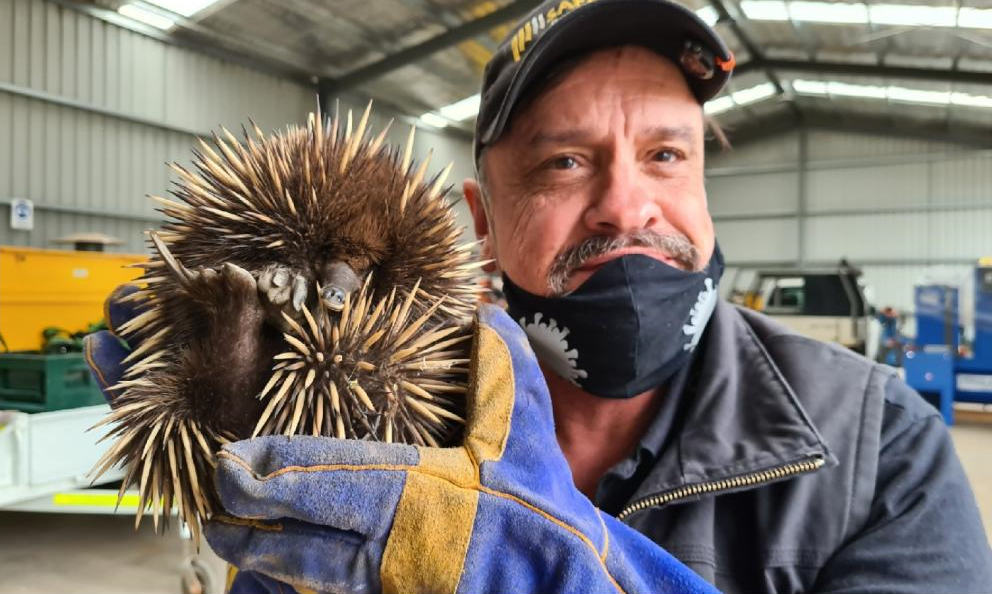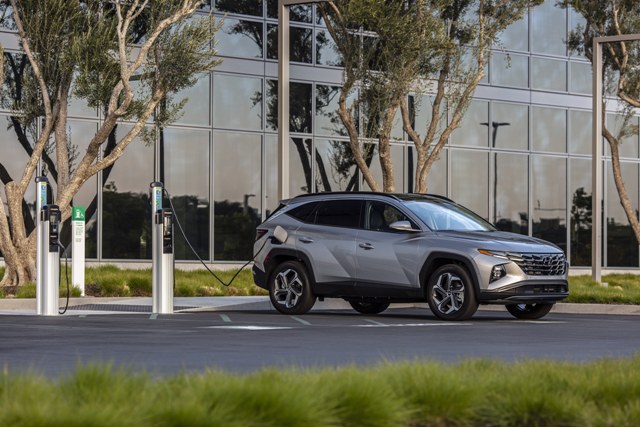
How do you go from Laddertubes to electric mining trucks? Why would you call a truck like that an echidna? These are the questions I put to Beau McKenna, marketing manager of Safescape in Australia.
He answered: “The Bortana EV was originally a product of mining safety specialists Safescape who produce products such as Laddertube and Edge Protector. Safescape developed the Bortana EV prototype and commenced the initial phases of pre-production for the Bortana EV. Once it reached a certain size a decision was made to carve out the Bortana EV and create a stand-alone brand ‘Bortana’ to continue with the pre-production into production builds. While it might seem like a stretch that a plastic escapeway manufacturer would develop an electric vehicle, our overarching ethos is ‘safety’ so producing a vehicle that will make underground workers safer is the core link that connects our businesses.”
In 2005, while working underground as an Airleg Miner, Steve Durkin saw the conditions of traditional escapeways and conceptualised Laddertube. By 2009, Steve had built the first Laddertube at his home in Regional Victoria. After receiving interest from mining companies, he established Safescape. In 2010, After successful prototype developments, the first version of Laddertube was installed at Fosterville Gold Mine (Victoria, Australia). Recognising that prevention is better than cure in safety, Safescape begin the development of a zero-emission vehicle to improve miner health and safety. The Bortana EV was born.
Bortana is the OEM (original equipment manufacturer) of the Bortana EV and the Australasian distributor of the diesel Agrale Marruá, made in Brazil. The Bortana EV is derived from the Marruá base. However, unlike a lot of other Australian electric vehicle manufacturers, it isn’t a retrofit.
“As we have a relationship with Agrale through distribution, they are making the base body and chassis to our specifications on their Marruá production line in Brazil and not incorporating any diesel components. The vehicles arrive as a rolling chassis in Bendigo, regional Victoria, and from there we add all other components, batteries, motor, etc., producing the vehicle from the ground up. When it’s complete, we roll the vehicle off our production line as a Bortana EV.” See the video here:
Why use the echidna as an emblem for an electric mining truck? The answer is that the echidna is an iconic Australian monotreme — sometimes known as spiny anteaters, they are quill-covered monotremes (egg-laying mammals). The four extant species of echidnas and the platypus are the only living mammals that lay eggs and the only surviving members of the order Monotremata. And yes, they suckle their young.
“The echidna motif came about through a search for the perfect animal representation of the Bortana EV — we wanted something uniquely Australian, made for the underground, rugged and robust. After some other initial considerations, we settled on the echidna. Shortly after, we had an actual echidna make its way into our Bortana EV workshop here in Bendigo, so it seemed serendipitous.”
“We are currently finalising the fleet of 10 pre-production Bortana EVs, some of which are already on trial with sites in Australia (however, we are unable to disclose where). Once the pre-production fleet is complete, we will turn our attention to full production, which is likely to commence at the end of 2023.” I asked what sort of numbers could be produced, and Beau told me: “Production numbers are being driven by the industry. We can comfortably make 4–6 vehicles per month in the early stages, but depending on client demand and cashflow, this could easily scale.”
“We are receiving huge amounts of interest from the mining industry mainly because we are one of the only OEMs producing a non-retrofit vehicle that is built for purpose and carries the creature comforts and styling of a mainstream consumer utility vehicle. Our biggest differentiators in the market are our 2-tonne payload, galvanised body, sealed chassis, and enhanced safety features giving an estimated life of the vehicle in high demand underground duties at 7–10 years. This combined with the standard EV benefits of zero emissions, less heat, and reduced maintenance makes it an interesting prospect for mine sites worldwide.
“Maintenance on the Bortana EV is similar to other EVs, there are far fewer moving parts so the likelihood for wear and tear is reduced and as such maintenance focuses more on inspection than on greasing and oiling components or replacing filters.”
“And while the vehicle has been designed specifically for underground mining, we are receiving a lot of interest from other industries where a long life, off road, electric utility would be beneficial (i.e., forest/park management services), so we hope to be able to help other industries transition to zero-emission as well.”
Maybe there is a potential for a slightly less hardcore version to be sold to the general public in a few years. After all, people are buying Hummers!
A typical commercial ute will only last 12–18 months in the wet, salty, and acidic environment of a mine, but the Bortana ute — based on an Agrale chassis built for the Brazilian jungle and the Brazilian army — is expected to last more like 7–10 years. The Bortana EV is currently being produced as a single cab, with dual-cab and people-mover options to come in 2023. It boasts an impressive 160kW output motor, 350Nm of torque, and 2 tonne payload.
The Bortana is galvanised to protect it from the elements. A big increase in longevity like this produces cost benefits as well as environmental gains. Longer-lasting vehicles means less need to produce new vehicles — saving carbon.
Ben from Solar Citizens tells me: “They were doing amazing things with the electric drive side of things, including a lot of telemetry to see what’s happening with the vehicles they’re sending to mines all over the world — and the electric drive aspect has big benefits for the mine environment, including cheaper running and not putting out the heat or particulates a diesel does. But there’s clearly a lot of other problems they’re trying to solve with this new vehicle, not just electrification!”
With Australia’s huge mining industry as a customer base, and very little competition for this vehicle type, the electric echidna-badged Bortana is looking at a very healthy future.
I don’t like paywalls. You don’t like paywalls. Who likes paywalls? Here at CleanTechnica, we implemented a limited paywall for a while, but it always felt wrong — and it was always tough to decide what we should put behind there. In theory, your most exclusive and best content goes behind a paywall. But then fewer people read it! We just don’t like paywalls, and so we’ve decided to ditch ours. Unfortunately, the media business is still a tough, cut-throat business with tiny margins. It’s a never-ending Olympic challenge to stay above water or even perhaps — gasp — grow. So …







